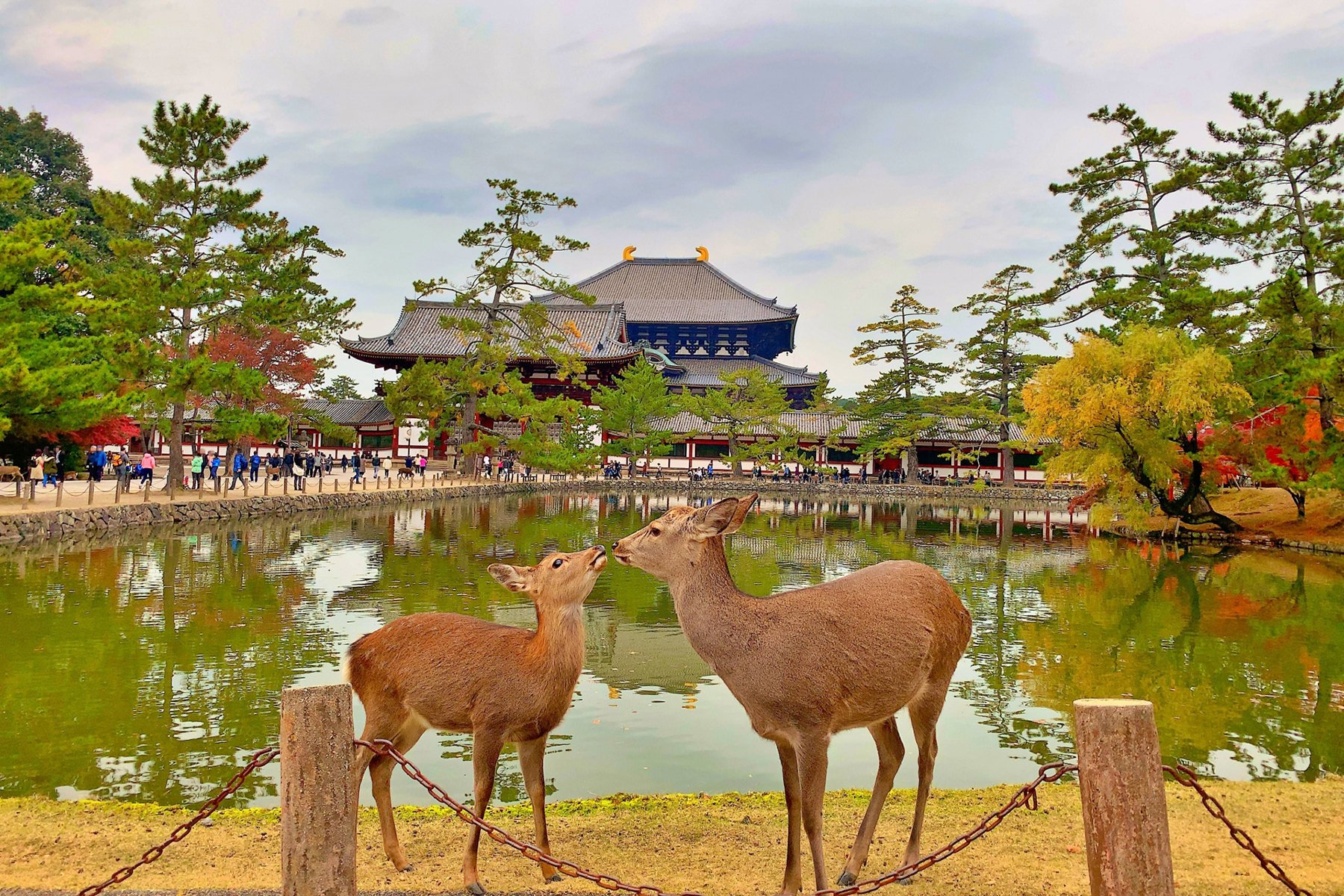Explore Nara: A Journey Through Japan's First Capital
Explore Nara, the ancient heart of Japan during the Nara period (710-794), where history and tranquility converge. Roam the verdant expanse of Nara Park, mingling with its gentle deer, and marvel at the grandeur of UNESCO-listed temples like Todai-ji and Horyu-ji. Be captivated by the breathtaking cherry blossoms of Yoshinoyama, and let the serene elegance of Nara's ancient beauty envelop you.
Where is Nara?
Central Nara Area
About 10 minutes by local bus or 20 minutes by walking from Nara Station.
Nara Park
Nara Park is a huge park in central Nara. You can visit any of Nara's main attractions including Todaiji, Kasuga Taisha and Kofukuji. It is also home to hundreds of freely roaming deer. You can get deer crackers for sale around the park, and enjoy feeding them.
Todaiji Temple
Todaiji is a UNESCO World Heritage Site with deep historical roots. It is one of Japan's most historically significant and culturally important temples. Brace yourself for a wow moment as you step into the temple, and you will see a massive bronze Buddha, which is absolutely breathtaking!
Kasuga Taisha Shrine
You can enjoy the beautiful vermilion-lacquered shrine pavilions and lanterns there. Kasuga Taisha Shrine was built in the 8th century to pray for the protection of Heijo-kyo where was the ancient capital and the prosperity of the people. Every year on February 3rd, August 14, and August 15, as many as 3000 lanterns light on the grounds of Kasuga Taisha Shrine as Shinto ritual.
Horyuji Temple
Horyuji Temple, located in Ikaruga, Nara, Japan, was established in 607 AD by Prince Shotoku. It is one of the oldest surviving wooden structures in the world. Recognized as a UNESCO World Heritage site, Horyuji Temple is not just a historical marvel but also a spiritual sanctuary and a must-visit destination for those seeking a deep connection to Japan's cultural and religious roots.
Yoshino Area
About 2 hours from Nara Station by trains.
Mt. Yoshino
Mt. Yoshino is famous for its stunning cherry blossoms in spring and fall leaves in fall. In July 2004, the sacred sites and pilgrimage routes from Mt. Yoshino and Mt. Koya to Kumano were registered as a UNESCO World Heritage Site as “Sacred Sites and Pilgrimage Routes in the Kii Mountain Range.”
Kinpusenji Temple
Kinpusenji was originally built in the 7th century and rebuilt by the donation of Toyotomi Hideyoshi, who was a Japanese samurai and daimyō of the late Sengoku period in 1590. The temple is part of the UNESCO World Heritage.
Totsukawa Area
About 2 hour 30 minutes from Nara Station by taxi.
Totsukawa Hot Spring
It is known as a "real hot spring”. This is an extremely luxurious hot spring made possible by the abundance of hot water in Totsukawa Village. In addition, Totsukawa hot spring has the qualities of "hot water for beautiful skin. You can truly relax with the luxurious hot spring there.
© the Nippon Communications Foundation
Tanize Suspension Bridge
You can feel the beautiful nature on the longest suspension bridge in Japan. It is a symbol of Totsukawa Village and built by the villagers in 1954.
Nara captivates with its deep history and serene beauty. From free-roaming deer to ancient temples, it offers a unique glimpse into Japan's soul, making every visit unforgettable.
Explore Nara: Exclusive Amnet Tour
Full-Day / Applox. 8 Hours
Visit the most essential sites to experience the culture and history of Japan.
10 Days 9 Nights
Visit the most essential sites to experience the culture and history of Japan.
6 Days 5 Nights
Kyoto to Osaka: Dive into Japan's deep history & modern vibes.
7 Days 6 Nights
This tour gives you a sampling of all that Japan has to offer, from unique locales to “must see” tourist attractions in Tokyo and Kyoto.
2/19/2024















